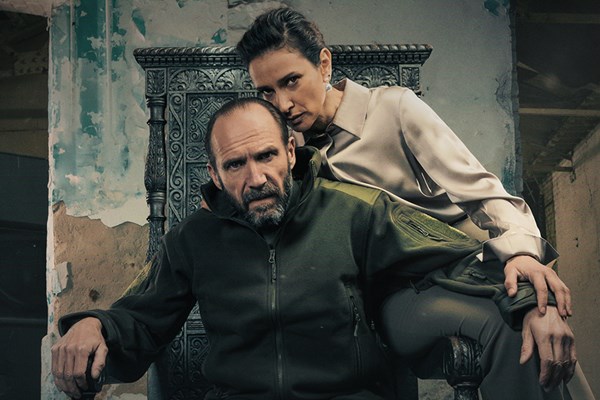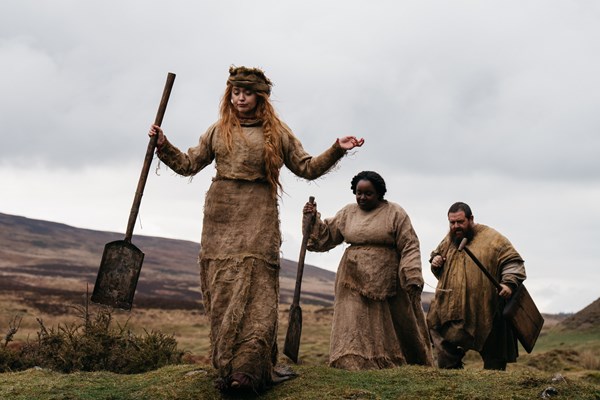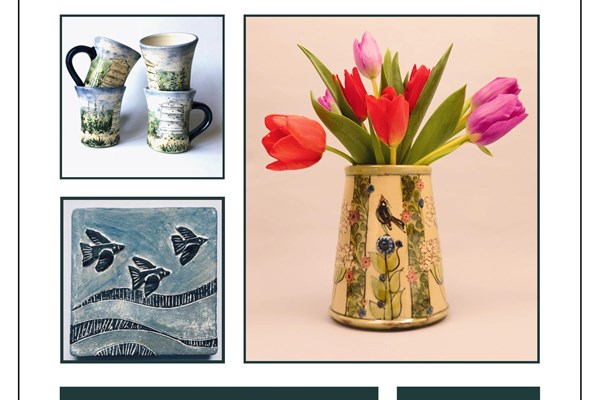A timeline of Stamford Arts Centre's history
Stamford Arts Centre has a long and rich heritage, a lot has gone into making us who we are now!
From the beginning...
1727
The Stamford Assembly Rooms is built on St George’s Square. Public assemblies became popular across the UK with dance the most important feature. Other activities included playing cards, taking tea and gossiping. Now the ballroom is the earliest surviving example in Britain.
The site was originally leased in 1727 from the Earl of Exeter by Askew Kirk, who was a dancing master. It was a condition of the lease was that the Assembly Room be built. Kirk died in 1738, but assemblies continued. One such event took place in 1816 when, for a price of 5 shillings patrons were able to enjoy a cup of tea, a game of cards and an evening of dancing. The event was attended by The Marchioness of Exeter, her son The Marquess, the Earl and Countess of Lonsdale, the Earl of Harborough, The Earl of Winchilsea and Miss Finch, Lord Brudenell and many others from the fashionable society of that period.
1766 to 1768
The theatre is built. The first proprietor/manager James “Jemmy” Whitley promises it will be the best new theatre in the country and is described as “…the completest place of it’s size in the kingdom” and “wonderfully grand”.
14 March 1768
Stamford Theatre opens with comic opera “Love in a Village”. The Stamford Mercury reported that “…it was performed much to the pleasure and satisfaction of a numerous and polite audience.”
For the next 100 years many big names of the English stage appeared (such as William, Charles Macready, Charles Kemble, Mrs Siddons, Edmund Kean, Sheridan Knowles and Miss Ellen Tree) and the theatre catered for a variety of tastes. Like many other theatres it adopted the title “Theatre Royal”.
1815
A relief show is held for the sufferers of the Battle of Waterloo.
1824
In 1824, the Assembly Rooms played host to Madame Tussauds, where visitors could see effigies of royal persons and military figures dressed in spectacular costumes.
1863
A relief show is held for Lancashire Mill Workers due to the distress caused by the effect of the American Civil War.
Fri 23 June 1871
Due to several factors, the Theatre closes. Touring company visits become scarcer and rail travel is introduced giving audiences the opportunity to travel to bigger theatres elsewhere. One of the theatres biggest supporters the, 3rd Marques of Exeter, died in 1867, robbing the theatre of one of its most powerful patrons and support had slipped since then.
Boxing Day, 1871
The theatre opens as the headquarters of “Stamford Billiard, News and Chess Club”. It remained as this until World War II.
Post World War II
The buildings became available for casual lettings, general elections, dog training, badminton, dances, exhibitions, bazaars and jumble sales. A sad time as the buildings ended up in a bad state of neglect.
October 1949
Chairman of the Welland Valley Art Society (WVAS), Mr Ernest A. Hodgkinson, pointed out that Stamford needed a cultural art centre but no action was taken until…
1966
Mrs Gladys Teesdale suggested that local societies interested in the arts should meet together. Famous member of WVAS, Wilfred Wood and the rest of the society enthusiastically promoted the idea. At a packed public meeting at the town hall, the idea was voted overwhelmingly in favour of the idea and President of WVAS, George Bentley, became the first chairman.
27 November 1969
The 6th Marques of Exeter suggests renting the three rundown buildings: The Assembly Room, Theatre and House on St Mary’s Street and St George’s Square. The rent is £5 per annum.
1972
The buildings are transformed and opened as the new Arts Centre. The theatre is not yet open. First official chairman of the Arts Centre Committee is Alan Stavely. Over the next 11 years the Arts Centre would have seven chairmen.
Saturday 16 September, 1978
After over 100 years, the 170 seat theatre reopens its doors. The renovation cost around £75,000 and is staffed entirely by volunteers.
Afternoon of 18 November, 1978
The theatre is officially opened by HRH the Duchess of Gloucester. The Marquess of Exeter makes an introductory speech to an invited audience and The Duchess unveils a commemorative plaque on stage. Chairman of the Arts Centre Management Committee, Mr Charles W.H Aldridge, proposes a vote of thanks and in the afternoon, a programme of Georgian music is played by the Barlov Baroque Players.
29 June 1979
Anna Timm begins the Arts Centre column of the Mercury.
1980
The Gallery is opened by Wilfred Wood...get the info from gallery wall
1980
The Stamford Shoestring Theatre Company merges with the Arts Centre to become resident repertory company of Stamford Theatre.
2 October 1983
Sue Cameron, the first ever director is appointed at the Arts Centre.
1986
Simon Lewis from Windsor became Director. He introduced a new logo design and a fresh programme and encouraged more activities for young people and further classes for adults.
1990
Due to a need for extra funding, management of Stamford Arts Centre is taken over by South Kesteven District Council. The council implemented staff and resources that were needed.
1992
Plans for new cinema are given the go ahead and the Arts Centre has a big summer refurbishment. The theatre gets new seats and a new lighting box and desk as well as space for the next phase of development: the film projector. English Heritage advised the redecoration of the ballroom. The relaunch also saw the introduction of concessionary rates for OAPs, UB40s, children and students alongside the existing Artscene membership.
1993
Arts Centre is used as set for BBC production Middlemarch. Actors were recruited from Stamford Operatic, Pantomime Players, Shoestring Theatre and Stamford Shakespeare Company to jeer, howl and laugh in a political rally as Robert Hardy made a fool of himself on a political platform pre-built for the day.
24 October 1994
The cinema opens with a sell-out screening of Four Weddings and a Funeral with a surprise special guest: Mike Newell, director of Four Weddings! He told the audience “It’s such a thrill to be in a place that’s opening not closing.” Other films in the season included The Mask, The Piano and Schindler’s List.
Thursday 29 October, 1998
Since being open for 4 years, more than 100,000 movie lovers have attended the cinema. After celebrating its 4th birthday, the Cinema celebrates the 1000th screening.
September 2004
Hollywood came to town when Stamford became the set for Pride and Prejudice. A-listers Keira Knightly, Donald Sutherland and Brenda Blethyn were joined by hundreds of locals who appeared as extras including Arts Centre staff. It all began when film directors were having a drink in the coffee shop and realised what a perfect setting it was. The spectacular transformation of the Arts Centre began 6 weeks before the 3 day shoot and included a row of shops stuffed with stuffed pheasants, deer and rabbits hanging outside. The film was shown 40 times and was seen by 8000 people.
2016
The theatre is refurbished with new seating and a new colour scheme. The kiosk and theatre foyer are also updated.
March 2020
The Arts Centre temporarily closes due to the covid-19 pandemic. It is the first time since 1871 that the building has been closed for an extended period of time.
From our What’s On section...
-
Macbeth: Ralph Fiennes & Indira Var...
Thurs 2 & Mon 13 May
Tony and BAFTA Award winner Ralph Fiennes (Antony & Cleopatr...
-
Seize Them!
Fri 3 - Sat 4 May
Dir: Curtis Vowell | UK | 2024 | Run time TBC Cast | Aimee Lou Wood, Nicola Coughlan, Lol...
-
arts centre promoted events, music
 Last Few Tickets
Last Few TicketsDean Friedman In Concert
Fri 3 May
Hailed by critics and fans alike as one of the finest songwr...
-
Stamford Pottery Market
Sat 4 May
Stamford Pottery Market - Saturday 4 May 2024 There’s just...



